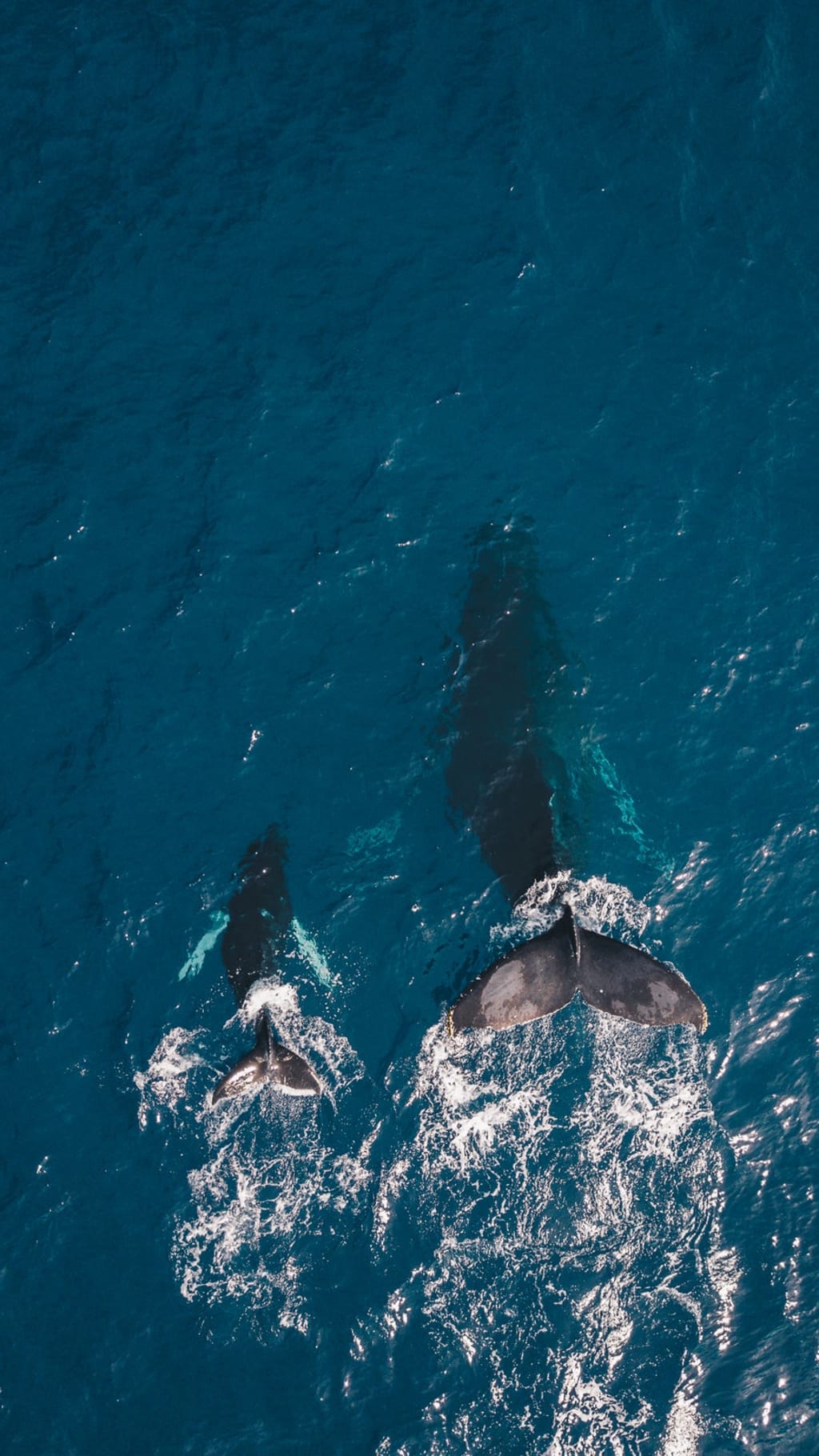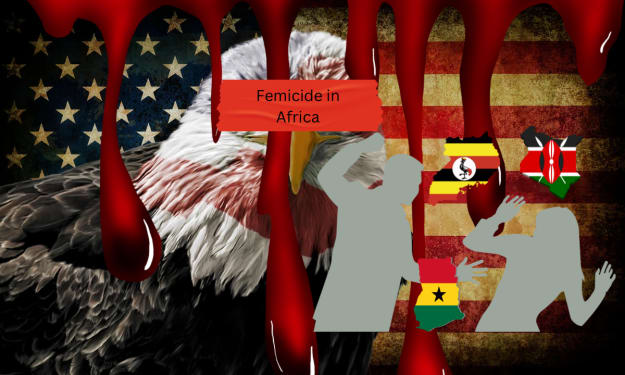
The ground is stained red with gallons of blood spilled daily. There is a stench of death lurking in the air. With giant blades men tear flesh from bone in an animalistic manner, slicing each piece into long strips of hide and blubber. This is the world of the whaling factory. The carcass of a sperm whale lies on its side as men tear away the blubber to use for oil. The mouth hangs open as if in a last heartfelt scream of agony before death consumed it. On this cold morning, the men are warmed by the heat rising from the carcass as they slice into it. When the cutting is over, the remains are hauled away to be used for such things as dog food.
This butchery is not necessary. The future of whales looks grim but there are alternatives. Our ecological system need not be imbalanced in this manner or to the current degree. There are alternatives to whaling. The past has been eventful while the present has an unfair advantage. The only hope is to look towards the future and the hope for tomorrow by learning from the past and the present.
The whale is one of the greatest creatures to inhabit the earth. From the beginning of time, there have been whales. Larger than even the dinosaurs, blue whales can reach a length of 100 feet from a calf of 23 feet after a 9 and three-quarter month gestation period. With this imposing image, it is easy to imagine the significance of the whale in the world. Whales inhabit what makes up the largest portion of the Earth’s surface. The worlds seas cover 71 percent of the planet’s surface, or 140 million square miles. With all this room, there is space for an increase in their numbers—if man will allow it. It is difficult for the number of whales to increase at a considerable rate because of whaling and the long gestation period of many whales. The average period for a fetus to become a calf is approximately one year.
Whaling has been in existence for thousands of years. The first whalers were the Eskimos who hunted bowhead whales for the meat that they could provide. By the 11th century, the Basques had also begun to hunt whales. The used the whale bone more than the blubber. In the 13th century the uses for whale oil were discovered and the whales were hunted for their blubber to be used as lamp oil. Japan, Holland and England began to whale commercially in the 1600s. By the 1700s the United States had also joined the fleets of whalers taking to the seas and became one of the largest whaling countries. In the 1860s whaling had begun its modern stage. The whales were now pursued by steam powered boats and hollow harpoons were used that could inflate the animal so it would float.
In the early 20th century, whaling has become a major source of income for many countries. In the beginning there were about 150,000 blue whales. From 1910 until 1925, 47,200 blue whales were killed. This seems a small number compared to the fact that in the winter of 1930-31 another 29,410 were killed.
Blue whales are not the only ones to have received such treatment. The grey whale was literally slaughtered in the 1946-47 season leaving a mere 250 alive. Sperm whales have probably felt the largest impact of the whaling industry. The hunting of sperm whales began in 1712 when Christopher Hussey, a whaler from New England, happened upon a school of sperm whales. He killed one and towed it home.
During the 18th and early 19th century, the sperm whale was the main whale that was hunted. In present time it is again very important as many baleen whales become scarce. The oil contrived from the blubber of the sperm whale is used for many things. There is great value in both the refined and unrefined forms. One of the most common uses is on leather, clothing and certain types of upholstery to produce a soft finish. Other uses for the oil include specialized forms of lubrications that stay good in a wide range of temperatures and pressures. There are things that can be done with the rest of the whale also. The meat and bone can be converted to meal for both pet and human consumption. The spermaceti is widely used in the cosmetic industry as a base for various types of creams and lipsticks.
Pilot whales are hunted for many of the same reasons that sperm whales are. The rounder head of the pilot whale contains the equivalent of the spermaceti from the sperm whale. This oil is used for lubricants as is the sperm whale’s. The hunting of the pilot whales was profitable because of the fact that pilot whales swim in schools numbering the hundreds. Commercial whaling has found this a strong source of whaling.
Because of this extensive hunting, the views towards whales has changed. An example of this is Moby Dick. In the book a sperm whale is shown as fierce and deadly. This is true only to the extent that they are aggressive only toward man. This attacking sense may be triggered by the sight of boats. Boats have come to represent man and thus death.
The numbers of whales on the earth has been drastically reduced since the beginning of whaling. A man by the name of Svend Foyn put a harpoon gun into the bow of boats. Since that time the possibility of catching larger and more valuable baleen whales has increased. This has caused a drastic change in the number of whales currently inhabiting the earth. There are fewer than 25,000 blue whales and fewer than 150,000 fin whales.
The grey whale has not been as fortunate to have a standard history. There are currently about 16,000 in the Northeastern Pacific. After the first few decades of whaling in the 20th century, there were only a few thousand in existence. By American whales alone, they were nearly driven to extinction in the early 1850s and 1860s. Unfortunately, the groups that once lived in the Western North Pacific, near Korea, did not survive the most recent onslaught of whaling. There are now extinct or nearly so.
At present the commercial whaling industry has complete control over the whales. There is no hope for the whale if faced by a modern whaling ship. The modern day harpoon is 1.5 meters long and weighs 55 kilograms. The head is composed of four barbs. To this is attached a grenade and a leg. The grenade is 9-10 kilograms and contains a bag of 400 grams of black powder. The harpoon is then loaded into a gun which is mounted on the bow of the ship. The guns have a spring recoil and runout cylinders so that the whaler can keep in contact with his harpoon. Upon impact the grenade explodes and the barbs open so that the harpoon is lodged in the whale’s body. If the harpoon is properly placed, death should come to the whale shortly.
On a Japanese expedition in 1977, Ohsumi found that the average times of death for various whales varied. The fin takes 6.12 minutes; the sei, 4.0 minutes; and the minke, 3.72 minutes. However, the most common time for a whale to die by harpoon is 3-20 minutes. There is hemorrhaging and eventually, the whale gives up and drowns. When non-explosive harpoons are used, as on the minke whale, the killing can last up to an hour.
There are many suggested alternatives to the grenade tipped harpoons in the hunting of whales. The first of these are harpoons that carry phials of prussic acid or a charge of carbon dioxide. There is also the possibility of electrical harpoons used in much the same manner as the electric chair for the death sentence. The proposal of anesthetic or immobilizing drugs is not possible. This was eliminated because of the fact that the eventual use of whale products could be for human consumption.
Recently great steps have been taken to preserve the whales. Since 1975 there has been a strong effort around the world to restrain and eventually end all commercial whaling. This effort is the result of the organization Greenpeace. Greenpeace actively involves itself in the fight for the preservation of the great whales. On many occasions, they have actively confronted foreign whaling vessels in a peaceful manner. The impact of whaling on our ecological system is then presented.
These are not the only efforts in the fight to end commercial whaling. As early as 1967 there were laws passed for the protection of these animals. Since 1967 blue whales have been totally protected by government. In 1979 the International Whaling Commission (IWC), passed a law which prohibits the use of factory whaling ships in all whaling but the minke whale. There were also limitations on where whaling took place. At this time, the Indian Ocean was designated to be a whale sanctuary free of whaling. In 1981 the Convention of International Trade in Endangered Species (CITES), meeting in New Delhi, India, proposed that the importation of the sei, fin and sperm whale be outlawed. This was passed by an overwhelming margin.
The IWC received many positive responses to their plans to end commercial whaling. In 1982 they voted to phase out all commercial whaling by 1986. In 1983 Peru announced that they would abide by this decision. In the same year, the quota for whales to be killed was cut by 18 percent to 9,975. Chile followed Peru’s example and announced it would kill no more whales.
Even with this wholehearted support of many countries, there were still those that continued to disagree with the idea to end whaling commercially by 1986. When the IWC voted to end commercial whaling, three countries stood strongly against their decision. These were the USSR, Japan and Norway. They planned to continue whaling against the decision of the IWC. In July of 1984 the USSR announced that it would completely ignore the IWC and their plans for whaling. At this time the main issue discussed was a scientifically-based decision that the catch limit of minke whales in the southern Atlantic be lowered by one-third.
International governments have done what they can to preserve the whales. In 1979 the United States Congress passed the Packwood-Magnuson Amendment. This severely limits the U.S. fishing distribution of any country that works against the ideas set up by the IWC. The United Nations stated in 1972 that whaling must end. By 1982 the optimism and determination was high as the IWC said that whaling would end.
Currently in discussion is the Pelly Amendment. This requires that Secretary of Commerce Buldridge certify that a nation is in offense to whaling laws. Then it is up to President Reagan to decide if the imposing country should receive the restriction. If this amendment is enacted, it would restrict the import of fishery products from that nation.
Currently, however, it seems as if President Reagan will not concern himself with the problem too much. When confronted with the problems currently arising from Japan, he said he saw the future of whaling a s a “minor issue.” This is not a small problem. Japan is one of the largest whaling countries in the world. Not only do they whale extensively themselves, but they purchase much of the catch from Brazil and the USSR. Also, a whaling company in Brazil, Copesbra, is financially controlled by Japan.
Japan does hold a strong financial interest in commercial whaling. If they were to kill 400 sperm whales, they would gross about $6 million. This would benefit many people. The rest of the world has different plans. Sperm oil is currently outlawed by all countries involved in the decisions of CITES. So, even if there were no sanctions on whaling, Japan would have a very limited market. Also, the U.S. withheld a fishing distribution until the end of 1984 to see what Japan would do in regard to whaling when faced with this. This was worth over $50m million. At 4am on November 11, 1984, Japan brought two sperm whales into their port at Wadaura, Japan. They had made their decision. Japan had decided to continue commercial whaling. They chose to ignore all decisions made by the IWC. They strongly threatened the survival of whales. In that same month, Secretary Baldridge announced that the U.S. would not impose sanctions agreed upon if they promised to stop whaling by 1988. This allowed them an extra two years of whaling over the agreed 1986 end by the IWC.
The war on whaling is not limited to a few countries. Down under is the Australian Committee for the International Union for the Conservation of Nature and Natural Resources (ACIUCN). They wish to do such things as establish groups that would monitor endangered species. They also wish to take international action. There are also average people doing what they can to help. Many restaurants are boycotting the purchase of seafood from whaling countries. This would strongly affect their economic stability.
Whaling is not necessary to keep these countries stable. There are many possible alternatives for the products which are derived from whales. On the subject of food products, one easy solution is on the whale’s food chain. This replacement is krill. In 1976 the Food and Agriculture Organization along with the United Nations Development Program suggested the use of krill to feed the Third World. This became $45 million program. Because of the opposition to this plan, it was cancelled. This is still a possibility. Blue whales feed on krill, eating up to 3 tons a day. Luckily, the required amount for humans is less. Krill can be easily harvested in mass quantities. When krill are peeled, 85-90 percent of the gross is lost. However, the value of the remaining krill is increased. The number of krill currently in the oceans is immeasurable.
As for other products made from whales, there are substitutes. The largest concern is a replacement for the oil from the blubber. The most promising is the Jojoba bean. It is a possibility because it is chemically similar to the sperm oil. The major drawback is that the plant is slow growing. This causes problems in the time required to yield a crop the equivalent of the current oils.
There are many substitutions to whaling commercially. One problem still in discussion is that of noncommercial whaling. In many parts of the world Eskimos rely on whales to survive. They are a vital part of the Eskimo’s survival and livelihood. For many years, Eskimos have hunted the Narwhals through small holes in the ice. Called saussats through which they breath. This makes them an easy target for the Eskimos. The Eskimos use as much of the whale as possible, nothing is wasted. The meat is eaten, the oi from the blubber is used as kerosene, and the intestine is dried in the sun and made into waterproof clothing. The hide can be made into thongs that are supple in icy conditions. A delicacy which is eaten raw is mattak. This is the hide with a thin layer of blubber still attached. This is important because it has as much vitamin C as many fruits and vegetables that are not present in the Eskimo diet.
Whaling that has been done in some manner for thousands of years, with handcrafted harpoons, is man to animal for the purpose of survival. Current day commercial whaling is only a needless slaughter of a great creature. The modern phase of whaling has accomplished this. According to the Convention of Antarctic Marine Living Resources, harvesting must not endanger the ecological balance or cause changes that are not reversible within two decades. Whaling commercially has caused such a situation. The time is now to make a change in how we deal with our oceans. There are alternatives to this slaughter. We can live without it. Japan, the USSR, and Norway have yet to end their control over the world of whaling. It must be done, and soon. Farley Mowat, a Canadian naturalist says it best:
If we are to make amends to the whale nation for the despicable savagery with which we have treated their members in the past, we must do so now. In a few more years there will be nothing left that we can do for them…except write their epitaph.
Update: This was originally written in 1985. Great strides have been made to restore the whale population in the oceans. However, several countries still practice commercial whaling including Norway. Japan attempts to skirt the issue by calling their whaling industry scientific research. This research could be done through sampling from the whale and not require the slaughter of the numbers that they take annually.
New threats of an increased global population, chemical runoff and increased plastic pollution have hindered recovery of whale populations in many regions. We must continue to work to protect them or they will be the first domino to fall as the world environment crumbles.
About the Creator
Traci E.
Writing can be therapy, insanity or both. Here is my mind, my dreams, my fears, my thoughts, my life laid bare to share with you. Enjoy the journey into what is at once my blog, diary and world, and don't forget to tip your guide.






Comments
There are no comments for this story
Be the first to respond and start the conversation.